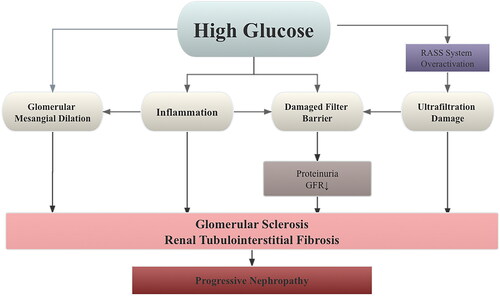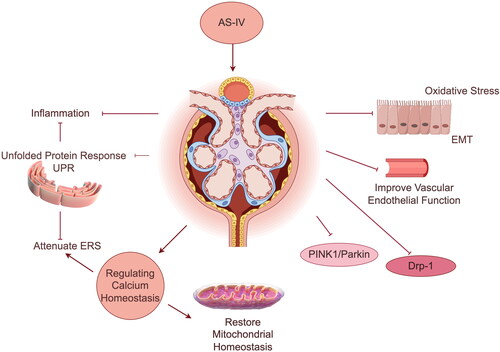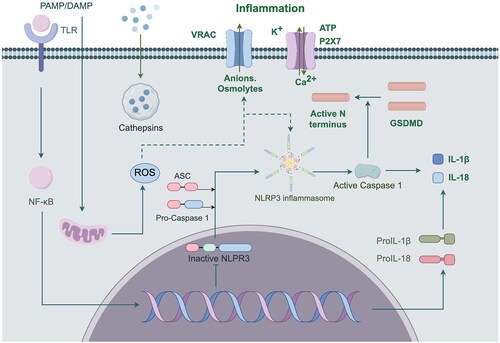Figures & data
Figure 1. DKD is primarily caused by a number of interconnected mechanisms, including excessive filtration damage to the GFB, dilatation, and oxidation of the glomerular mesangium. These mechanisms are complex in nature, with links to hemodynamics, metabolism, and immunopathology. The physiological mechanism of DKD is summarized in this diagram.

Table 1. Clinical studies on the efficacy of prescription formulas in the treatment of DKD.
Figure 2. AS-IV may treat DKD by reducing inflammation, attenuating ERS, regulating calcium homeostasis, restoring mitochondrial homeostasis (via the Drp-1 and PINK1/Parkin signaling pathways), countering oxidative stress, and improving EMT and vascular endothelial function.

Figure 3. ROS, ATP and other substances trigger NF-κB dependent pro-IL-1β and pro-IL-18 gene transcription by activating TLR/IL-1 receptors. After Caspase-1 cleavage, these pro-inflammatory factors are released into the cytoplasm in the form of pro-IL-1β and pro-IL-18, thus participating in the inflammatory response.

Data availability statement
This review uses data from a variety of sources, including PubMed, Cochrane Library, VIP, Wanfang Data, CNKI, and CBM, etc.
